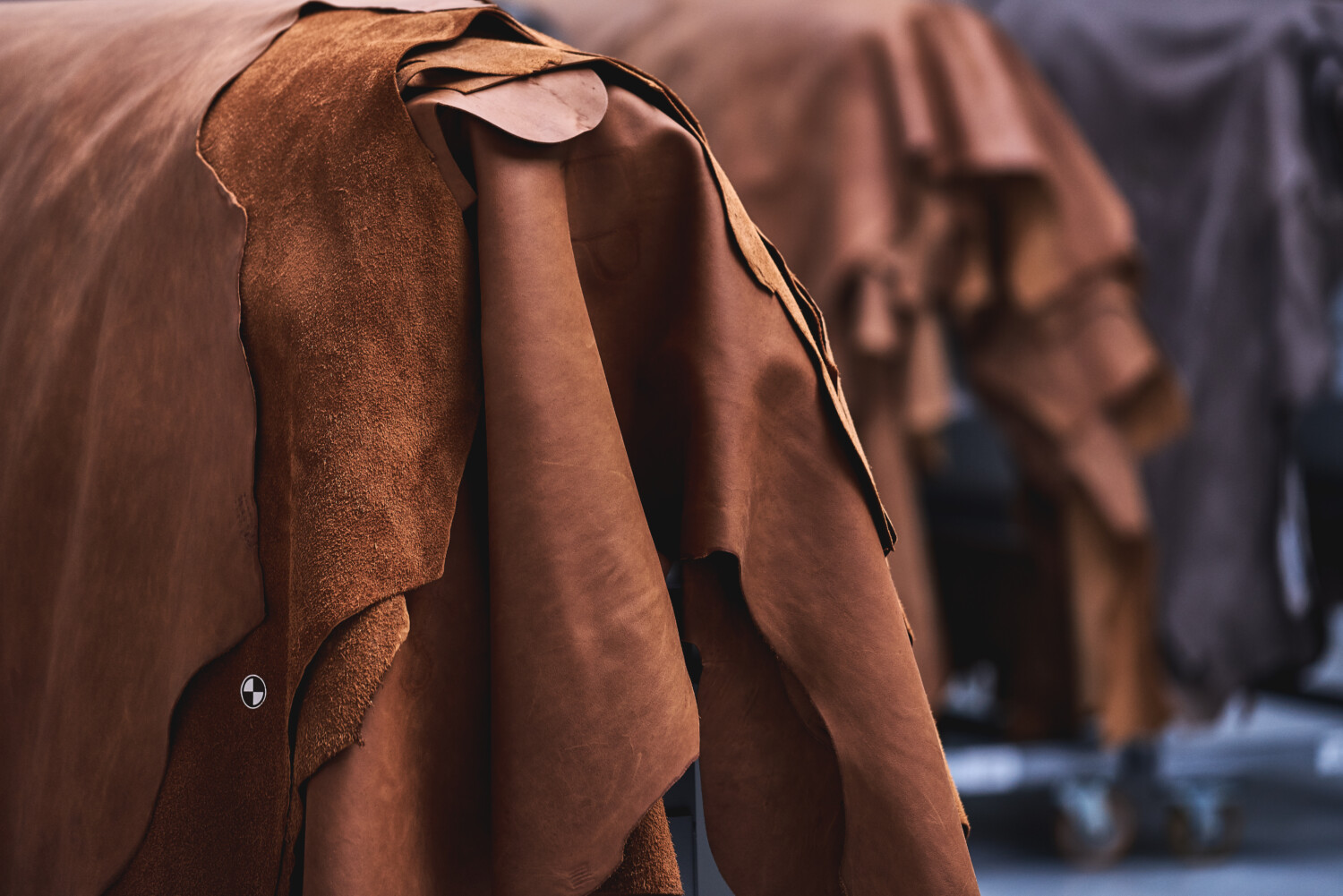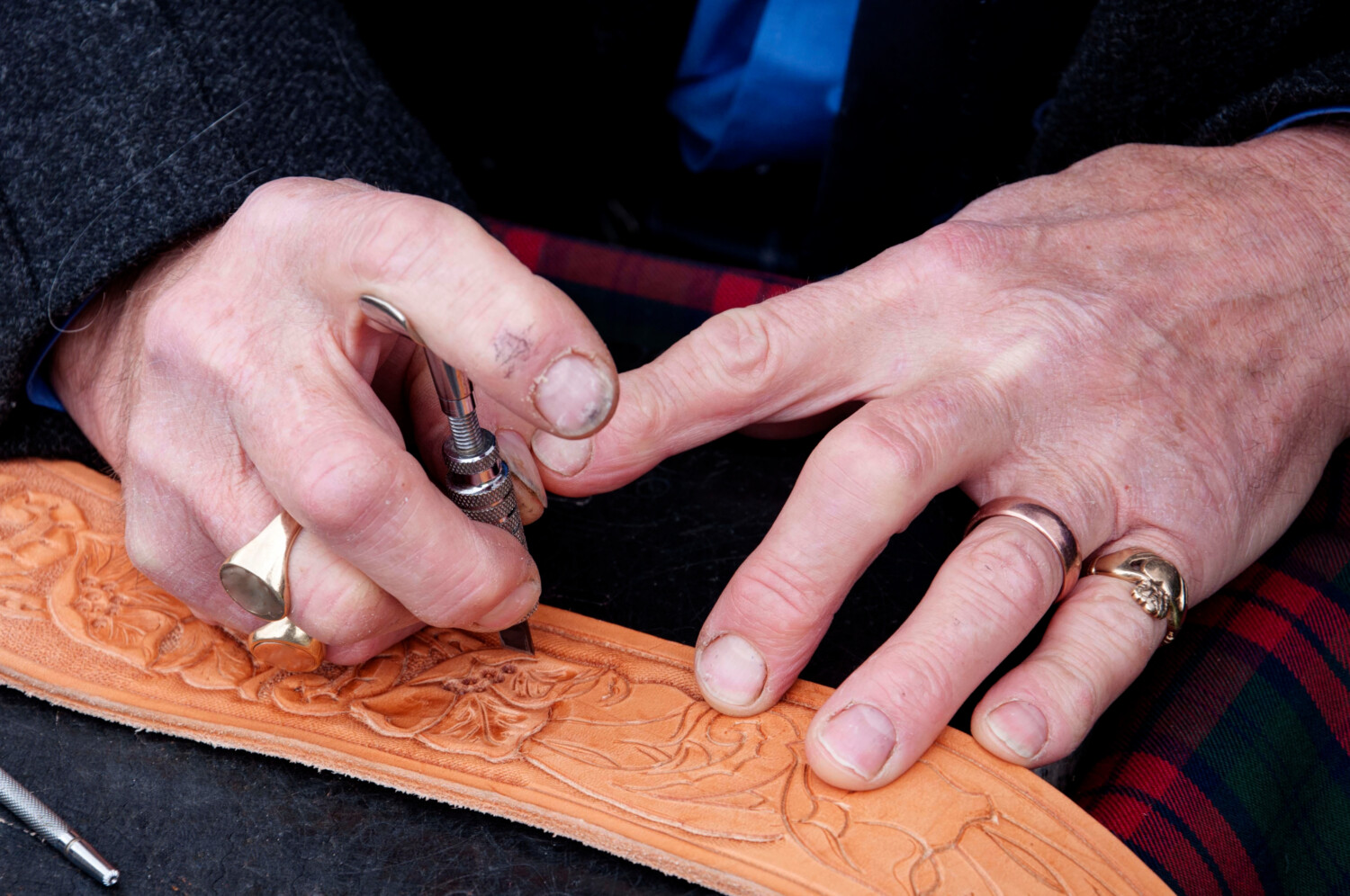The production of vegetable tanned leather is an intricate craftsmanship that requires time and skill. Said to be the world’s oldest leather-making tradition, vegetable tanning dates back to roughly 6000 BCE. It involves a process that uses natural tanning agents to bind collagen proteins found in animal skins, turning them into leather as we know it.
Vegetable tanned leather is becoming increasingly difficult to find as fewer artisans dedicate their time to this traditional method. In addition, it can also be a bit pricier compared to other types of leather. Keep reading to learn about the production of vegetable tanned leather and why its such a sought after commodity.
What Is Vegetable Tanned Leather?
Vegetable tanned leather is a type of leather that is made using a unique process that harnesses the power of natural tannins. This tanning method has been used for centuries, producing some of the most durable and high-quality leather products available.
The process of vegetable tanning begins with animal hides being soaked in a solution containing natural tannins extracted from organic materials such as oak and spruce bark, quebracho, tara pods, olive leaves, rhubarb roots or mimosa. The hides are left to soak for several weeks.

After this process, the hides are dyed and treated with oils and waxes. The process, called fat liquoring, introduces oil into the hide after it has been tanned but before it is dried. This helps to give the leather greater softness and flexibility. It also helps to protect the leather from damage and wear.
What Are the Benefits of Vegetable Tanned Leather?
The process of vegetable tanning results in robust and durable leather that can be used for various products. Vegetable tanned leather is also attractive due to its unique patina, which develops over time as it ages gracefully.
Vegetable tanned leather is the most environmentally friendly tanning process available, as it does not use any of the chemicals commonly found in more traditional processes. Unlike other methods, which may leave toxic residues behind in the wastewater, the natural substances used are biodegradable.
Another advantage of vegetable tanned leather is that its initial stiffness means it can be easily tooled and shaped into various shapes and sizes. This makes it ideal for creating custom pieces like wallets, bags, purses, belts and shoes. This stiffness can be made more supple with time and conditioning.

Finally, vegetable tanned leather has a distinctive fragrance that many people find appealing. This scent is often described as earthy, woody and sweet, resulting from the natural tanning processes using vegetable-based materials like tree bark. The aroma of genuine vegetable tanned leather will fade over time, but it can still be appreciated by those who enjoy quality leather products.
Overall, vegetable tanned leather is an excellent choice for those looking for a high-quality product with unique characteristics that will last years.
Why Is Vegetable Tanned Leather Rare and Expensive?
Artisans spend a month or longer creating each piece of vegetable tanned leather. As a result, it is considered higher quality and lasts longer than synthetically treated leather. However, despite its superior quality, vegetable tanned leather only makes up roughly 10% of all available leather today due to the length of the production process.
Not surprisingly, this superior product commands a higher price: it can cost around three times more than chrome or mineral tanned products. Additionally, limited resources are available for this type of leather, making it rarer than other types. The scarcity of vegetable tanned leather means that it can be challenging to find, and may require searching through specialty stores or online retailers.

Buying and Caring for Vegetable Tanned Leather
When shopping for vegetable tanned leather, look for pieces with a golden-brown color (unless dyed) and a pleasant fragrance. This indicates that the hide has been processed using traditional methods, which gives genuine vegetable-tanned leather its unique character and longevity. Additionally, examine the product closely to ensure it has been evenly treated without any surface irregularities or signs of brittleness.
Most importantly, ask questions about where the product is from and how it was produced. You can check labels and certifications to learn more about a brand’s ethical commitment to making leather goods in an eco-friendly manner.
To properly care for this type of leather, keeping it away from water and heat sources is essential. It should also be regularly conditioned with a leather conditioner to keep it soft and supple. Additionally, avoid using harsh chemicals or abrasive brushes on the surface of the leather, as these can damage the material.

Vegetable tanned leather is a unique and durable material that’s been made using natural ingredients for centuries. Because the process is time-consuming and requires scarcer resources, it’s rarer and more expensive than other types of leather.
Despite the higher cost, vegetable tanned leather can be a worthwhile investment due to its outstanding quality and distinctive look. Whether you’re shopping for something special that will stand out from the crowd, or want a long-lasting and durable item, consider giving vegetable tanned leather a try.
This story originally appeared on Simplemost. Check out Simplemost for additional stories.


